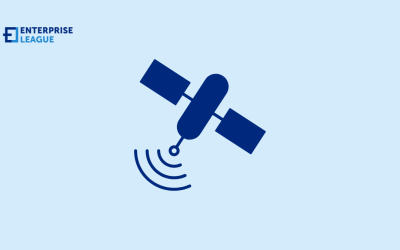Feedback, sentiment, or opinion, be it from customers or news outlets, can be positive, negative, or neutral. It all depends on the words and punctuations used as well as the context in which the words were said. For businesses, understanding customer feedback is integral. It helps them safeguard their reputation, monitor their brand and product reviews, and understand their customers’ needs.
In most cases, such feedback is presented in written form. Thus, when companies analyze these texts, found in different platforms, including review platforms, to establish whether what was written is/was positive, negative, or negative, they are said to have performed sentiment analysis.
What is sentiment analysis?
In this regard, sentiment analysis, also known as opinion mining, is a natural language processing (NLP) and machine learning (ML) methodology that uncovers where texts that constitute feedback fall within the polarity spectrum. It also reveals the text’s urgency, emotions, feelings, and intentions, depending on the type of sentiment analysis performed.
Types of sentiment analysis
There are different categories of sentiment analysis, including:
Intent analysis
Emotion detection
This form of sentiment analysis detects angst, sadness, frustration, happiness, panic, and more based on the context, words (lexicon), and tone used.
Aspect-based
Aspect-based sentiment analysis uncovers the targeted feedback, i.e., what a consumer thinks about a particular part of the whole item. For instance, in a review about a laptop, the buyer may have had issues with the camera but loves every other feature. In this regard, aspect-based opinion mining helps businesses unearth what customers feel about specific aspects of their products or services.
Fine-grained sentiment analysis
Also known as graded sentiment analysis, fine-grained opinion mining focuses on determining the position in the polarity scale wherein the feedback falls. It uncovers whether the opinion is very positive, positive, neutral, negative, or very negative. Alternatively, the polarity scale can be replaced with 5-star ratings.
Benefits of sentiment analysis
Sentiment analysis holds numerous advantages for businesses. These include:
- It helps detect unhappy customers as soon as possible, providing an opportunity to resolve their specific issues soon thereafter. As a result, the company can protect its reputation and build a solid relationship with its disgruntled customers.
- Opinion mining also offers insight into what consumers like and dislike, thus informing decisions and highlighting products’ competitive advantages.
- It enables companies to sort through large volumes of unstructured data efficiently and cost-effectively.
- The analysis can also be undertaken in real-time, meaning any feedback written is analyzed immediately.
- Lastly, sentiment analysis eliminates human bias and subjectivity, making the process as accurate as possible.
Challenges facing sentiment analysis
- The real meaning of the feedback depends on context, which may sometimes be hard to decipher.
- Some words have multiple meanings that could render a text ambiguous.
- Reviewers sometimes rely on sarcasm and irony to express their feedback; they might use positive words to describe a negative opinion, and this may prove hard to decipher without sophisticated approaches and machine learning algorithms.
- Inability to detect negation, a linguistic technique in which the polarity of words or phrases is reversed.
- Multipolarity of feedback, meaning the various clauses, phrases, or words have to be dissected to avoid misinterpretations; this is especially so in aspect-based sentiment analysis.
Issues such as the need for a contextual understanding of the feedback, negation detection, and multipolarity can be solved through data collection. The opinions/texts should be collected wholesomely, i.e., the entire text should be extracted from review sites. This approach ensures the context and intended meaning remain intact.
And this is where web scraping API comes in, performed by a web scraper, to scrape data for sentiment analysis. So, what is a web crawler and scraper? And what role do they play in scraping data for sentiment analysis?
What is a web crawler and web scraper?
A crawler/spider is a program that crawls the internet to discover new content/web pages. It then indiscriminately collects the data stored in the web pages, including URLs, meta tags, images, and text-based content, and archives it for future retrieval. On the other hand, a web scraper is a bot that automatically extracts publicly available data from websites. It mainly retrieves specific data.
When used in opinion mining, the crawler discovers websites containing feedback/opinions. The scraper then extracts this data for analysis. These bots ensure that all feedback-related data is collected. This article from Oxylabs does a great job of explaining web cralwers if you want to learn more about web crawling.
Conclusion
Sentiment analysis is important for businesses as it helps them protect their reputation, create targeted marketing campaigns, understand consumers’ needs, and more. But, while beneficial, it still faces challenges that can be solved through web scraping and web crawling.
More must-read stories from Enterprise League:
- The relevance of print marketing and how to make it work for your business.
- Innovative customer appreciation ideas for small businesses.
- Entrepreneurs over 70 that have defiled old age.
- Aspects that show the importance of cross-cultural communication in the workplace.
- Find out all the things that make messy people smarter.
Related Articles
How GPS transforms field service management process
In this article, we will explore the top advantages of implementing GPS tracking in field service management software and the benefits it brings to the table
Top 25 NFT startups that you need to be aware of (2024)
NFT startups are the hot topic in 2023. Here we gather 25 most innovative NFT startups that are revolutionizing the industry.
How to tackle the top SaaS content marketing challenges
In this post, we will go through some of the most common content marketing obstacles SaaS firms encounter and offer solutions on how to overcome them.
How GPS transforms field service management process
In this article, we will explore the top advantages of implementing GPS tracking in field service management software and the benefits it brings to the table
Top 25 NFT startups that you need to be aware of (2024)
NFT startups are the hot topic in 2023. Here we gather 25 most innovative NFT startups that are revolutionizing the industry.






